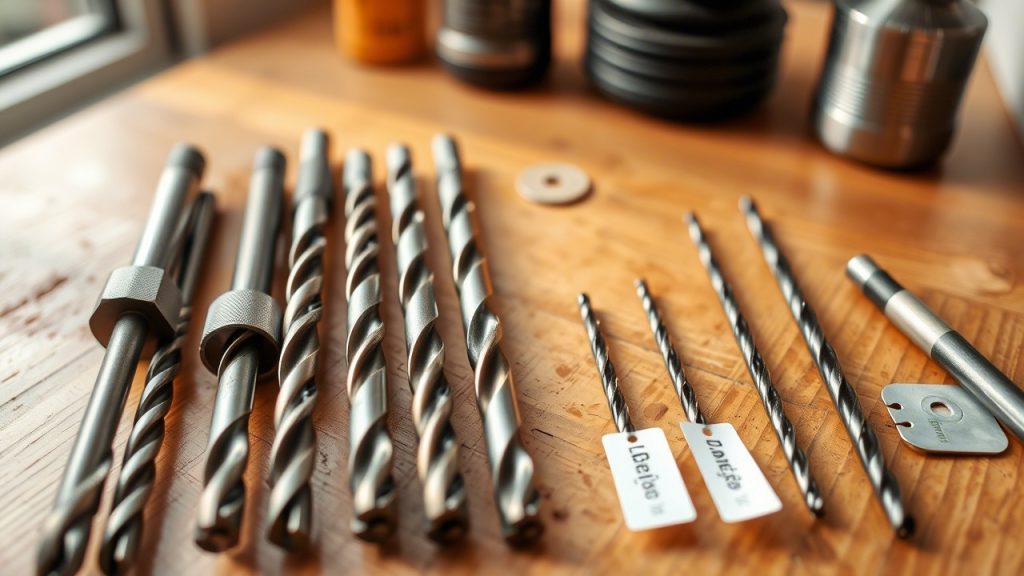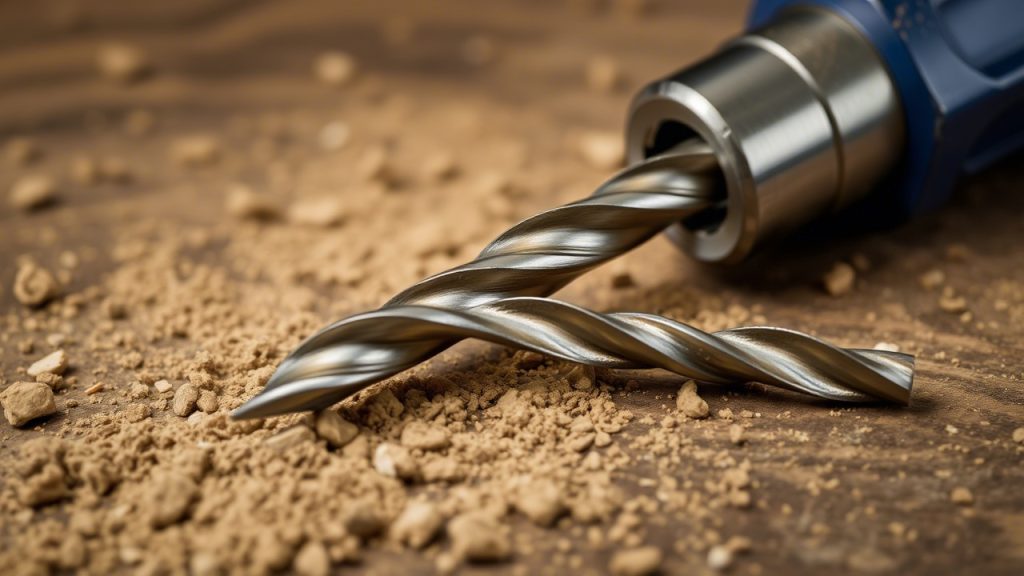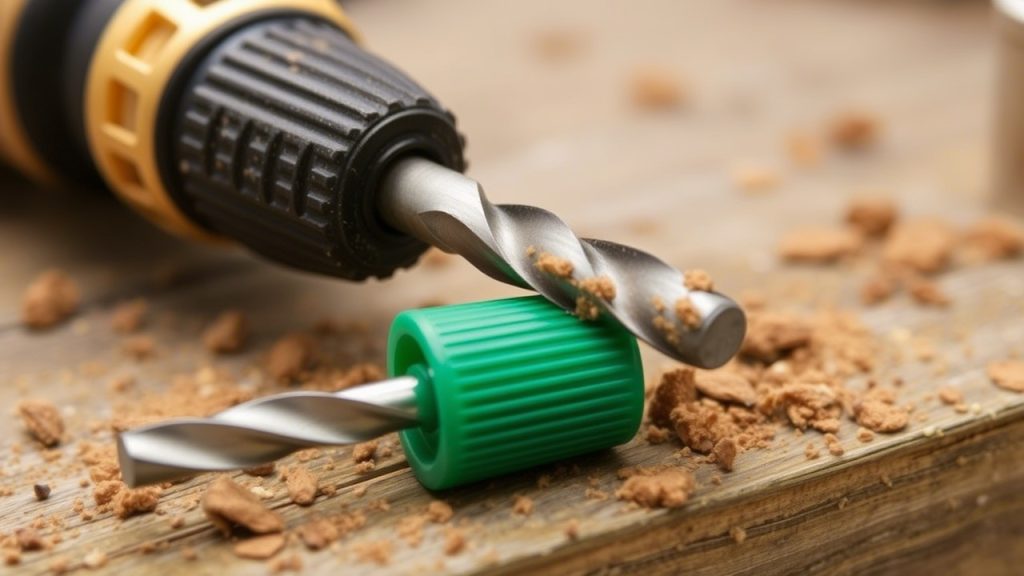The Ultimate Drill Size Chart – Perfect for Every Project!
When it comes to drilling, selecting the right drill bit size is crucial for ensuring a successful and safe project. Whether you are an avid DIYer, a seasoned professional, or just someone looking to complete a home improvement task, knowing your drill sizes can make a significant difference. Choosing the wrong size can lead to inefficient work, or worse, damage to the material you’re working with or your tools.
We will break down everything you need to know about drill bit sizes, provide you with a comprehensive drill size chart, and answer the most common questions about drill bits. This guide is designed to be the ultimate resource for anyone who wants to improve their drilling efficiency and get the most out of their tools.
Why Drill Size Matters
Drill bits come in a variety of sizes, and choosing the right one ensures that the hole you drill is the correct diameter and depth. The wrong drill bit size can result in a loose or tight fit for screws, nails, or dowels, and in some cases, it can even damage the material you’re working with.
Here are some reasons why drill size matters:
- Fit: If you are drilling for a screw or bolt, using the wrong size can make the fit too tight (leading to difficulty when inserting the fastener) or too loose (leading to weak connections and potential failure).
- Accuracy: Precision is key in many projects. Using the right drill bit size ensures that your holes are accurate and clean, which is especially important in carpentry, construction, or machinery.
- Material Preservation: For delicate materials such as wood, plastic, or metal, using the wrong drill size can cause unnecessary damage like splitting, cracking, or warping.
- Tool Efficiency: Proper drill bit sizing helps preserve the longevity of your drill and drill bits. Overforcing the wrong size drill bit can cause premature wear and tear on your tools.
Now that we understand why drill size is important, let’s dive into the ultimate drill size chart.

The Ultimate Drill Size Chart
1. Imperial Drill Sizes (Inches)
Imperial drill sizes are commonly used in the United States. These sizes are measured in inches, and they typically range from small sizes (1/16”) to larger sizes (over 1”). Below is a comprehensive list of the most common imperial drill bit sizes:
| Drill Bit Size (Inches) | Drill Bit Size (Decimal Inches) |
|---|---|
| 1/16″ | 0.0625″ |
| 5/64″ | 0.0781″ |
| 3/32″ | 0.0938″ |
| 7/64″ | 0.1094″ |
| 1/8″ | 0.1250″ |
| 9/64″ | 0.1406″ |
| 5/32″ | 0.1563″ |
| 11/64″ | 0.1719″ |
| 3/16″ | 0.1875″ |
| 13/64″ | 0.2031″ |
| 7/32″ | 0.2188″ |
| 15/64″ | 0.2344″ |
| 1/4″ | 0.2500″ |
| 17/64″ | 0.2656″ |
| 9/32″ | 0.2813″ |
| 19/64″ | 0.2969″ |
| 5/16″ | 0.3125″ |
| 21/64″ | 0.3281″ |
| 11/32″ | 0.3438″ |
| 23/64″ | 0.3594″ |
| 3/8″ | 0.3750″ |
| 25/64″ | 0.3906″ |
| 13/32″ | 0.4063″ |
| 27/64″ | 0.4219″ |
| 7/16″ | 0.4375″ |
| 29/64″ | 0.4531″ |
| 15/32″ | 0.4688″ |
| 31/64″ | 0.4844″ |
| 1/2″ | 0.5000″ |

2. Metric Drill Sizes (Millimeters)
Metric sizes are more commonly used in countries that follow the International System of Units (SI), such as Europe and much of Asia. Drill bit sizes in the metric system are measured in millimeters. Here is a metric drill size chart:
| Drill Bit Size (mm) | Drill Bit Size (Decimal Inches) |
|---|---|
| 1.0 mm | 0.0394″ |
| 1.5 mm | 0.0591″ |
| 2.0 mm | 0.0787″ |
| 2.5 mm | 0.0984″ |
| 3.0 mm | 0.1181″ |
| 3.5 mm | 0.1378″ |
| 4.0 mm | 0.1575″ |
| 4.5 mm | 0.1772″ |
| 5.0 mm | 0.1969″ |
| 5.5 mm | 0.2165″ |
| 6.0 mm | 0.2362″ |
| 6.5 mm | 0.2559″ |
| 7.0 mm | 0.2756″ |
| 7.5 mm | 0.2953″ |
| 8.0 mm | 0.3149″ |
| 8.5 mm | 0.3346″ |
| 9.0 mm | 0.3543″ |
| 9.5 mm | 0.3740″ |
| 10.0 mm | 0.3937″ |

3. Choosing the Right Drill Bit for Your Project
Now that we have a comprehensive drill size chart, let’s look at how you can apply this knowledge to your projects. The right drill bit size depends on the material you’re working with and the type of fastener you’re using.
1# For Woodworking:
- When drilling pilot holes for screws, match the drill size to the diameter of the screw shaft. For wood screws, a common drill size is 3/32” or 1/8” for smaller screws, and 1/4” for larger screws.
- For dowels, a 1/4” or 3/8” drill bit is often used, depending on the dowel size.
2# For Metalworking:
- When drilling metal, it’s essential to use a drill bit made of high-speed steel (HSS) or cobalt for durability. Start with a smaller pilot hole (like 1/8” or 3/16”) before drilling the final size.
- For bolts or screws, ensure that the hole matches the outer diameter of the fastener for a secure fit.
3# For Concrete or Masonry:
- When drilling into concrete, brick, or stone, use a masonry drill bit with a carbide tip. Common sizes range from 1/8” to 1/2” or larger, depending on the size of the anchor or fastener.
10 FAQs About Drill Sizes
1. What happens if I use the wrong size drill bit?
Using the wrong size drill bit can result in holes that are too small or too large, making it difficult or impossible to insert your fastener or causing the material to split. It can also cause undue strain on your drill, resulting in premature wear.
2. How do I choose the right drill bit for my screw size?
To select the right drill bit for a screw, use a bit that matches the diameter of the screw’s shaft (excluding the threads). This ensures a tight fit for the screw.
3. What is a pilot hole, and do I always need one?
A pilot hole is a small hole drilled before inserting a screw or nail. It helps to prevent the material from splitting and makes driving the fastener easier. It’s often necessary, especially in hardwoods.
4. Can I use an imperial drill bit on metric screws?
You can use an imperial drill bit on a metric screw, but the fit may not be as precise. It’s always best to match the drill bit size to the screw size for the most secure fit.
5. Do I need different drill bits for different materials?
Yes. Different materials, such as wood, metal, or masonry, require specialized drill bits. For instance, wood bits are designed with a pointed tip, while metal bits are made of high-speed steel, and masonry bits have carbide tips.
6. How can I measure the size of a drill bit?
You can measure the size of a drill bit with a caliper or use a drill size gauge. The size is usually marked on the shank of the bit, especially for common sizes.
7. Are drill bits sized by diameter or length?
Drill bits are primarily sized by their diameter. Length may vary depending on the type of project or material you are working with, but diameter is the key factor for selecting the right size.
8. What is the best drill bit for concrete?
The best drill bit for concrete is a masonry drill bit. These bits have a carbide tip that is designed to handle the hardness of concrete, brick, and stone.
9. Can I use a drill bit for a different material than it’s designed for?
While it’s possible to use a drill bit for a different material, it’s not recommended. For instance, using a wood drill bit on metal can cause the bit to wear out quickly or cause it to break.
10. How do I prevent my drill bit from overheating?
To prevent overheating, especially when drilling into metal, use a lubricant or cutting oil to reduce friction. Take breaks to allow the bit to cool down, and avoid applying too much pressure on the drill.
Conclusion
The right drill bit size is essential for achieving accurate, efficient, and successful results in your projects. With the comprehensive drill size chart above and a solid understanding of how to choose the correct bit for your material and fastener, you are well-equipped to tackle any project that requires drilling. Happy drilling, and remember to always match the bit to the task at hand!





